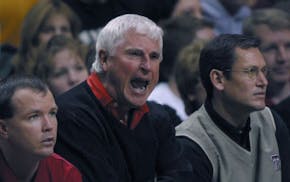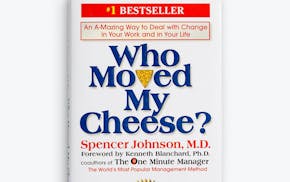"Pushing the envelope" is a phrase that originated with American test pilots like Chuck Yaeger and John Glenn in the 1940s. It described maximum stress situations for the metal skin ("envelope") of a jet aircraft. In other words, the plane was designed to fly safely up to a certain speed for a certain distance at a certain altitude.
The job of test pilots was to "push the envelope" by making the plane go faster, farther and higher. The term "pushing the envelope" came into popular parlance in the blockbuster 1979 book and 1983 movie "The Right Stuff."
Naturally, this phrase is near and dear to me. On my business card, my title is "Envelope Salesman." So literally, I am pushing the envelope every day!
Beyond that, "pushing the envelope" means pushing the boundaries and pushing yourself to be better, faster and smarter and to get the results you want, in business and in life. I can assure you that as times and businesses change, I have had to make many adjustments to keep our company functioning and prospering. It's about determination and risk-taking — going above what your customers expect and trying new things that will put you outside of your comfort zone.
Most people go for safety and security when planning and living their lives. There are certain lines they won't cross. Many life-changing, transforming and worthwhile decisions are outside their comfort zone and require risk, which prevents them from trying anything new.
When you study truly successful people, you'll see that they all saw opportunities, took risks and made plenty of mistakes, but when they were knocked down, they kept getting up … and up … and up. They owe their success to their willingness to accept change as inevitable and welcome the challenge.
Determined people possess the stamina and courage to pursue their ambitions despite criticism, ridicule or unfavorable circumstances.
A little book, "Jonathan Livingston Seagull," swept America in 1970, selling more than 7 million copies, but not before being turned down by 18 publishers first.
Richard Bach wrote the 10,000-word story about a seagull that refuses to join with those in his flock that are only interested in scavenging savagely for food. Instead, Jonathan Livingston Seagull wants to fly and soar to heights none of his kind could even imagine.
Most seagulls learn only how to get from shore to food and back again. But Jonathan kept going off by himself, flying higher and higher, until he finally was able to reach 8,000 feet, far higher than any other seagull had ever flown. He even learned to fly at night, something seagulls never do.
Jonathan would go into dives straight down — reaching the incredible speed of 214 miles per hour. He taught himself to do the loop, the slow roll, the snap roll, the point roll, the inverted spin and the pinwheel. Every day he kept learning new ways to fly that stimulated and nourished his soul.
Jonathan became a hero of wisdom and renown. Younger seagulls flocked to Jonathan to learn his flying secrets.
The lesson of this little book is the necessity to risk some things in life and, above all, to keep on learning. There are few prizes for following the flock.
No doubt about it, taking chances and making changes can be daunting. But consider the alternative. If you aren't content with the status quo, you have no choice but to change the way you are operating.
After all, it is the continued search for excellence and devotion to learning that is the true secret of professional accomplishment and personal happiness.
Mackay's Moral: To get what you've never had, you must do what you've never done.
Harvey Mackay is a Minneapolis businessman. Contact him at 612-378-6202 or e-mail harvey@mackay.com.
Mackay: Approach AI with a mindset of collaboration rather than fear

Mackay: The key to winning in sports, business and life is practice

Mackay: Humor can make even dire situations bearable

Mackay: Want a raise? How and when you ask for it matter


